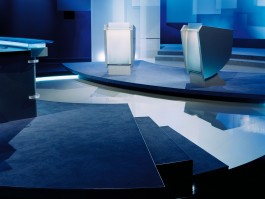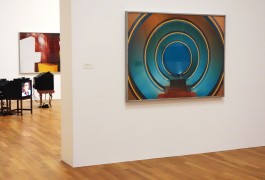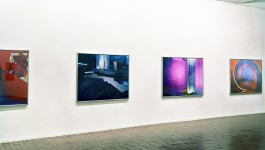turn
5 photographs: 120 x160cm, digital print on cardboard, 18 photographs: 60 x 80 cm, digital prints, 30 photographs: 24x36 cm, 30 x 45 cm, 40 x 60 cm, c-prints
2022
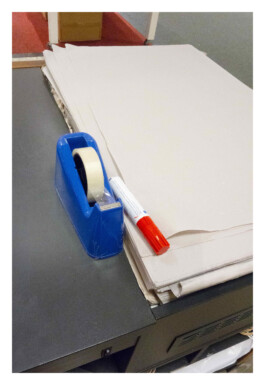
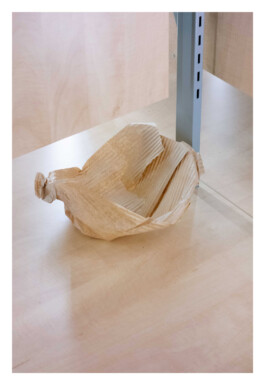
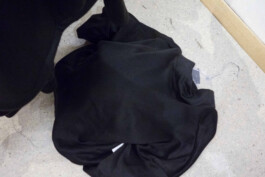

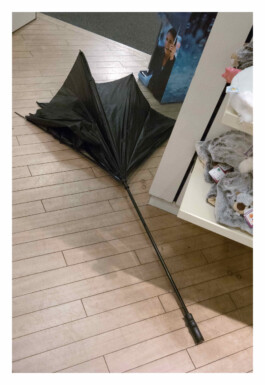
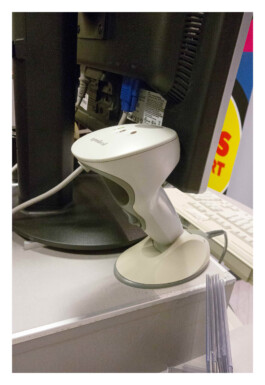

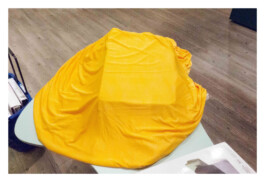
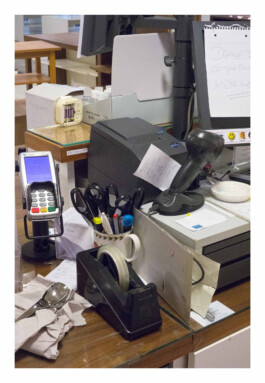
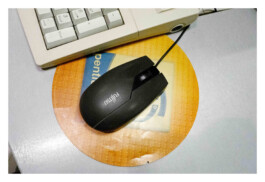
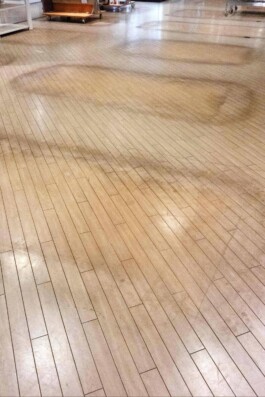
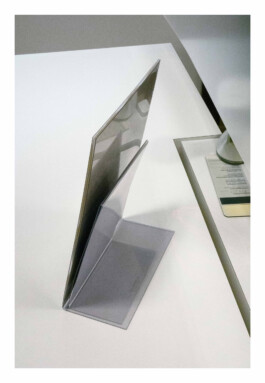
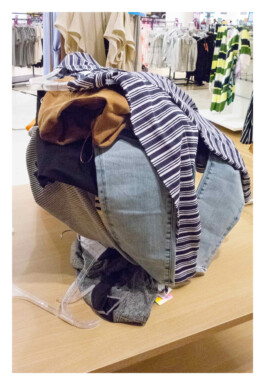
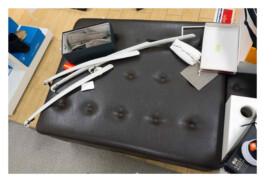
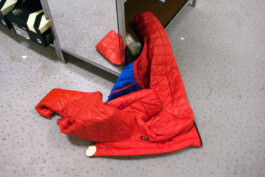
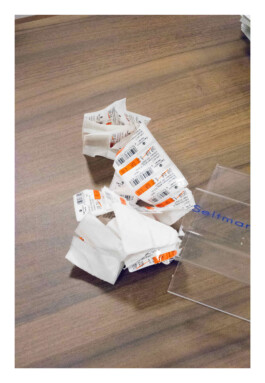
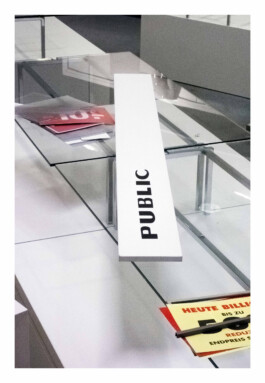
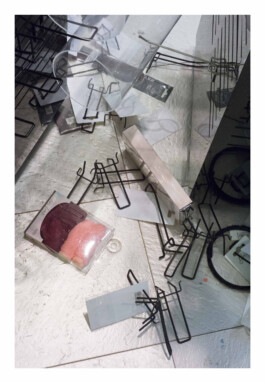

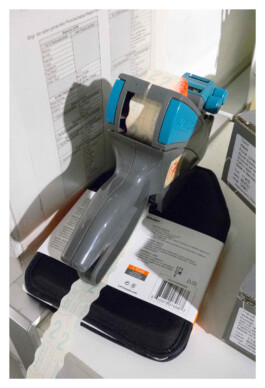
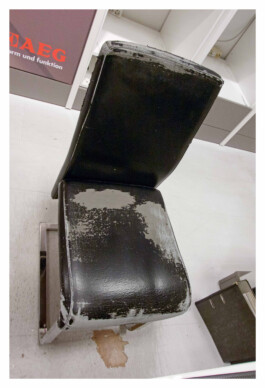
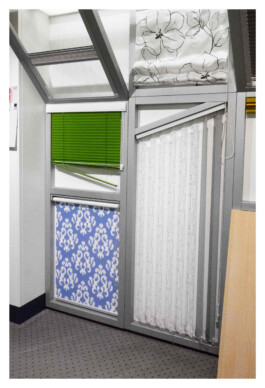
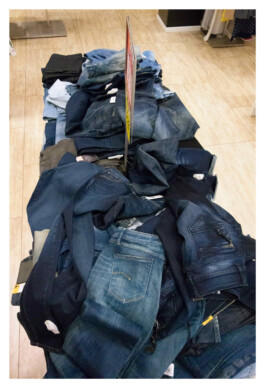
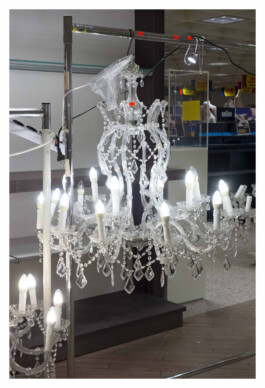
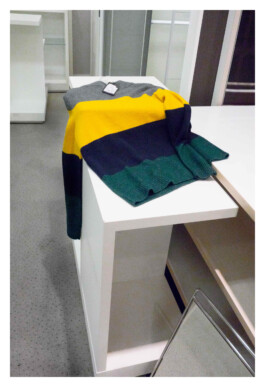
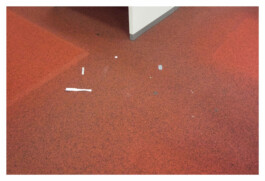
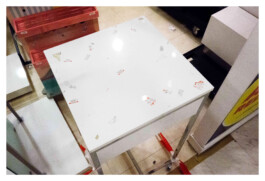
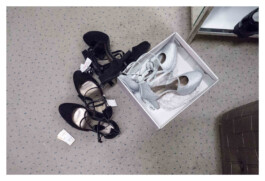
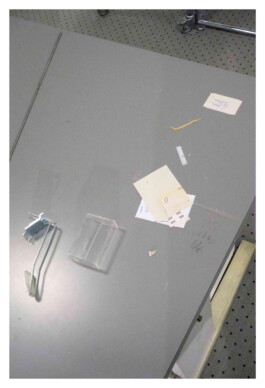
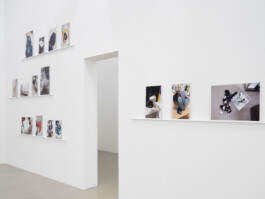
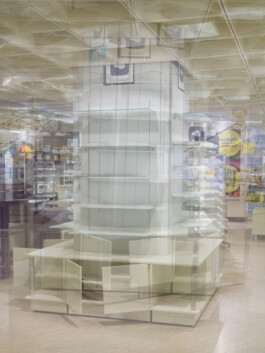
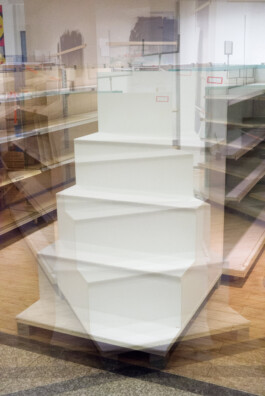
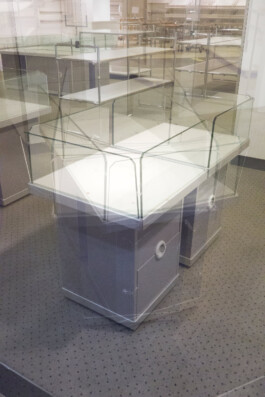
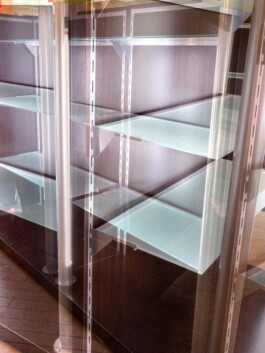
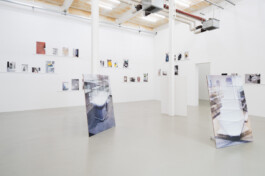
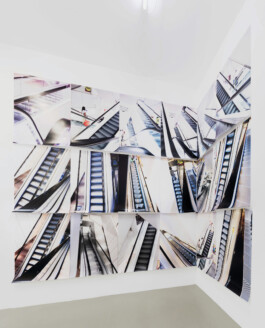
Fenster
12 photographs, 13 × 19 cm, c-prints, 2019
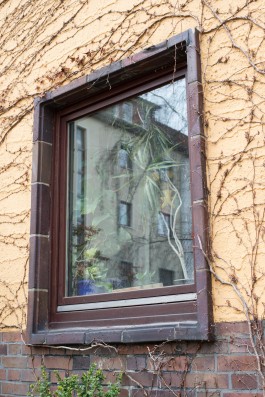

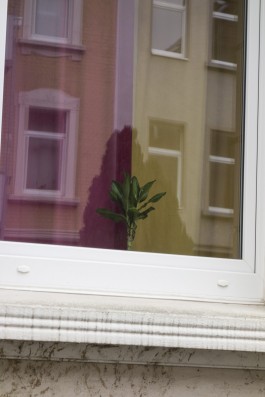

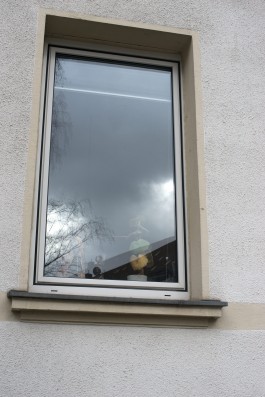
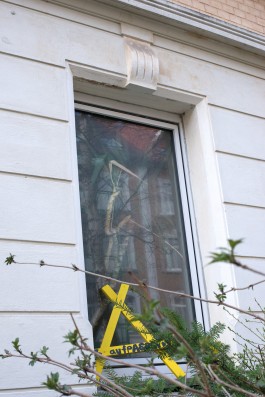
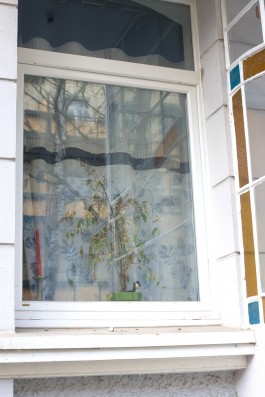
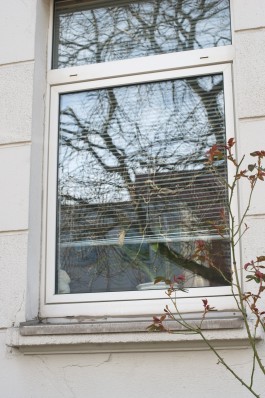
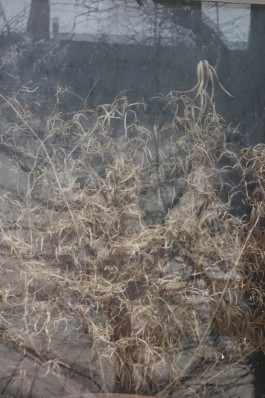
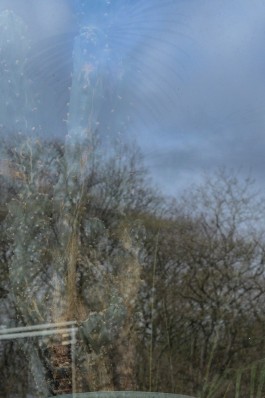
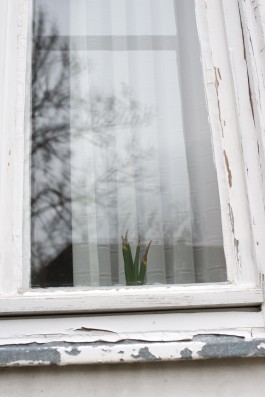
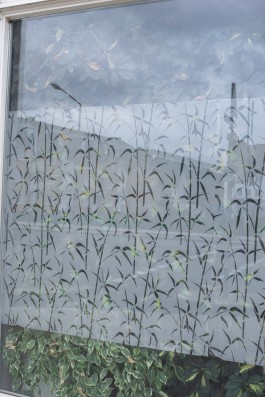
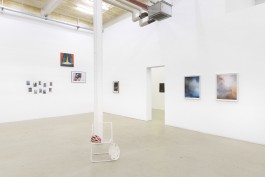
Upside Down
12 photographs, 6 × 83 × 58 cm, 3 × 98 × 68,5 cm, 3 × 138,5 × 97 cm, laser foil prints on glass, 2017, text
In previous exhibitions, Caroline Hake dealt with utopian ideologies of living. Considering how this extends to her current work, Hake references a series of fifteen photographs titled “Upside Down” taken during the cleanup and disposal of an old school complex. “I photographed in a comprehensive school in Braunschweig, which shows the upheaval situation of an Integrated Comprehensive School. The photographed school complex dates from 1972 and was one of the first buildings of this new type and concept. Room and color design, classrooms, corridors and guidance systems, auditorium and schoolyard should become the bearers of a democratic idea of school. Equal opportunities and positive synergies should be made possible by bringing together primary, secondary and high school students into one class. This ICS was the first in Lower Saxony and was demolished in 2016. The school then received a new modern, smaller building. I photographed in the old building and during the demolition work, the move out of the old building and move into the new building.” “However, I am not concerned with an architectural review, but rather with the example of this radical change, I would like to emphasize the change in architectural and social ideologies.” “In an entirely existential sense, school and education are representative of the endeavor to establish an ideal form of imprinting, optimal education and discipline, equal opportunity and the status of knowledge. These ideals reach their limits in reality. Daily testing shows that people follow very individual impulses, that other social groups represent different ideas and concepts, and that theories often can not be put into practice.” Text: Elizabeth Gerdeman
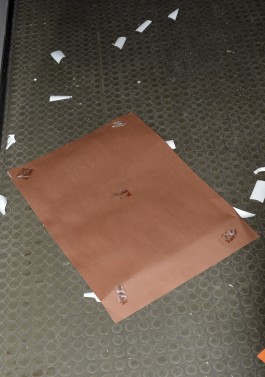
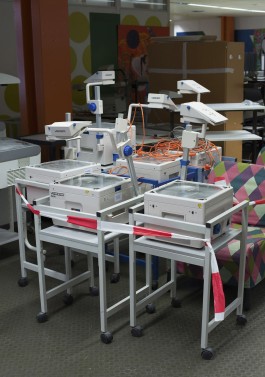
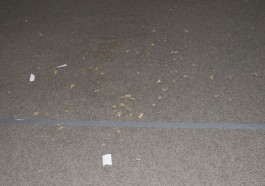
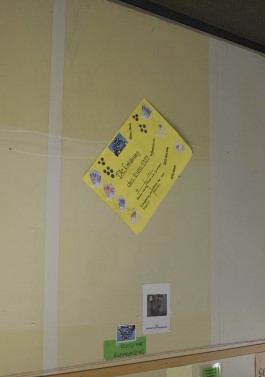
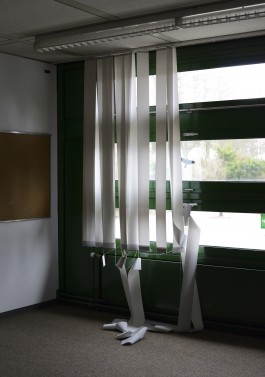
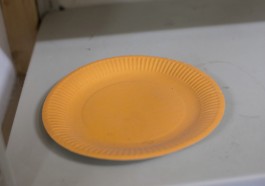
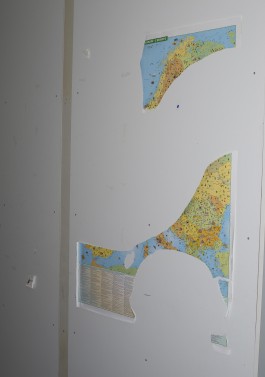
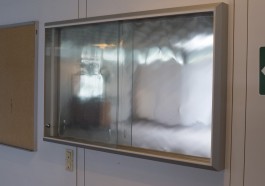
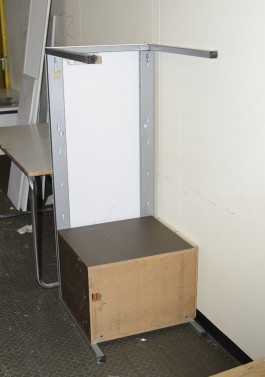
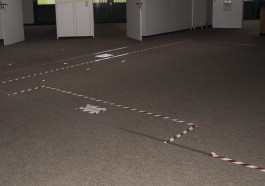
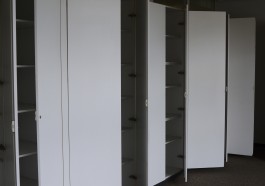
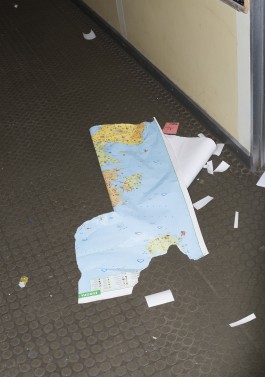
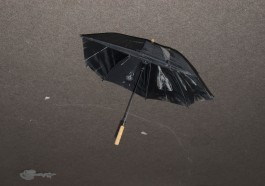
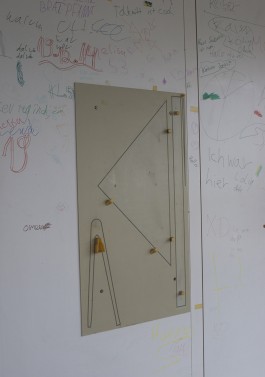
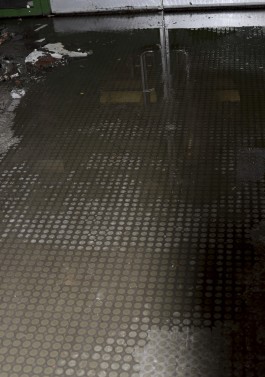
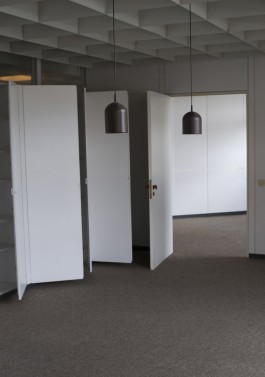
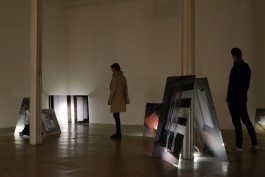
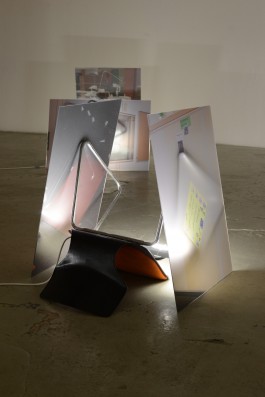
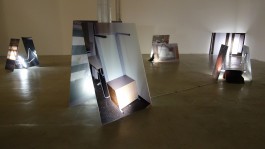
Planen
13 photographs, 60 × 90 cm, 3 × 105 × 150 cm, fine art inkjet-prints, 2014, text
In meiner Ausstellung Work and Progress habe ich Arbeiten zusammengeführt, die sich mit Phasen des Umbruchs und den immer wiederkehrenden Bemühungen des vermeintlich Neuen beschäftigen. Die Arbeit Planen habe ich während der Umbauarbeiten in einem Museum fotografiert. Der Blick richtet sich auf die Zeit zwischen zwei Ausstellungen. Aufbau und Abbau sind Teil desselben Vorgangs von Konzeption, Eröffnung, Präsentation und Beendigung einer Schau. Die Folien decken abstrakte Werke und Kisten als Sicht- und Staubschutz ab. Diese bleiben unter den Planen verborgen und die Fotografien machen nichts als das Licht, die Spiegelungen und Faltungen sichtbar.
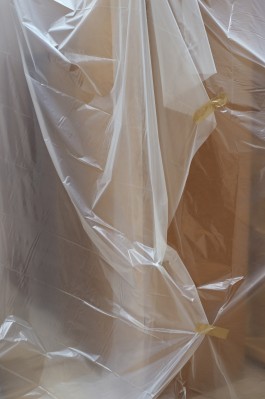
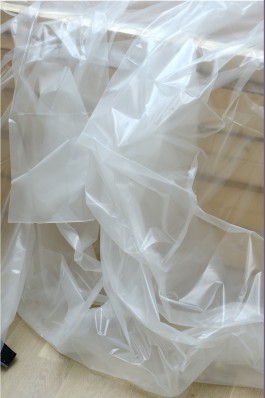
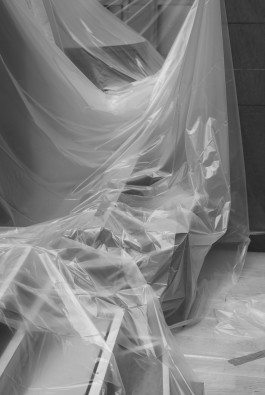
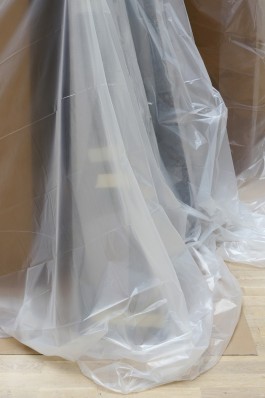
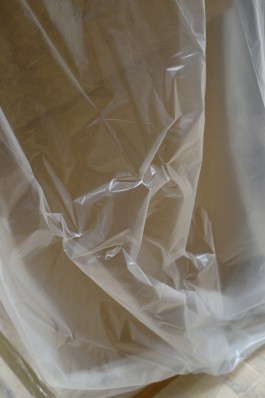
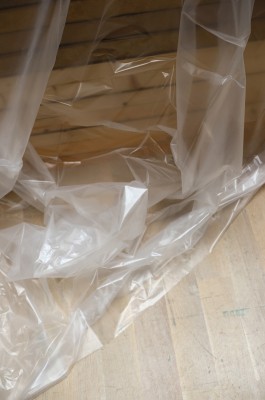
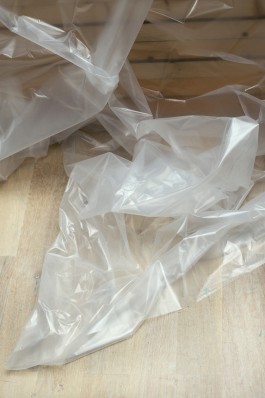
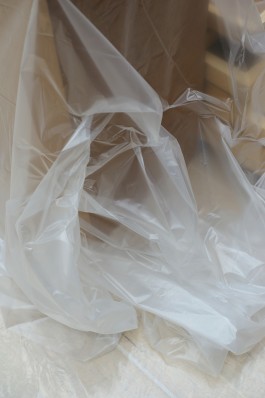
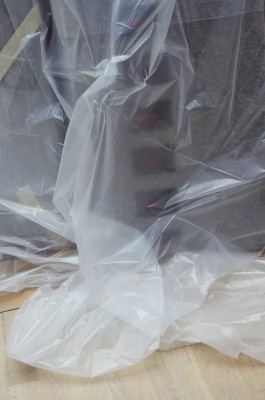
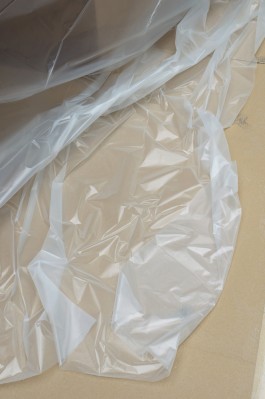
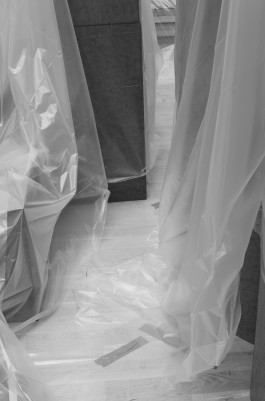
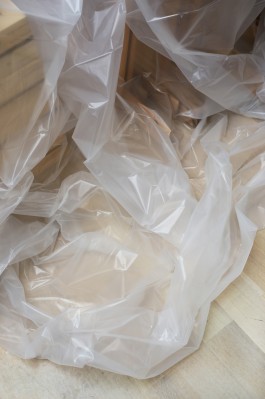
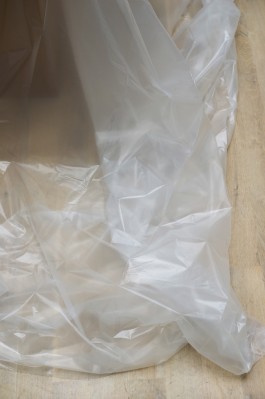
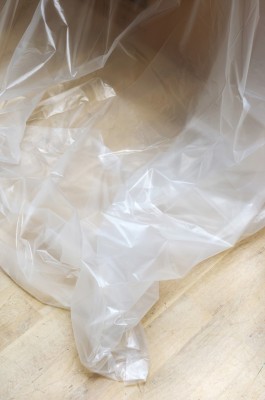

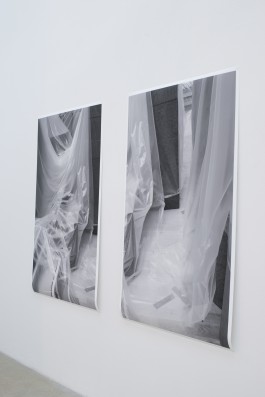
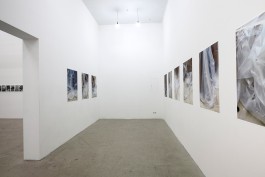
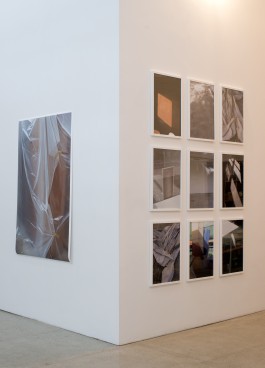
No Work
36 photographs, 36 × 58 cm. 2 photographs, 117 × 179 cm, fine-art-inkjet prints, 2013, text
Während meines Arbeitsaufenthaltes in Paris machte ich oftmals Pause in den überfüllten städtischen Parkanlagen. Die urbane Verdichtung der französischen Metropole führt zu einem Mangel an Orten, die jenseits der allgemeinen Hektik und Funktionalität, ein Moment der Ruhe, der Erholung oder des Stillstands ermöglichen. Die Parks glichen überfüllten Stadien, in denen der Wunsch nach Intimität und Ruhe inmitten einer großen Masse fast paradox anmutete.
Meinen bildnerischen Fokus legte ich aber auf Nischen und Ränder der Parklandschaft und auf Gebüschformationen, die jenseits des romantischen Bildes eine gewisse Ödnis und Unübersichtlichkeit boten und damit deutlich der innerstädtischen Struktur und dem Ideal einer gestalteten Parkanlage entgegenstanden. Die Gebüsche strahlen Einsamkeit und Melancholie aus und konterkarieren durch die Verwendung verschiedener Filmmaterialien und Kameratechniken ein Spektrum an Fluchtmöglichkeiten und romantischen Projektionen. Die Auswahl von 34 Fotografien innerhalb der Ausstellung No Work betonte in der Hängung die Redundanz der sechs ausgewählten Gebüschformationen. Im Künstlerbuch habe ich diese verschiedenen Gruppierungen teilweise als Leporello präsentiert.
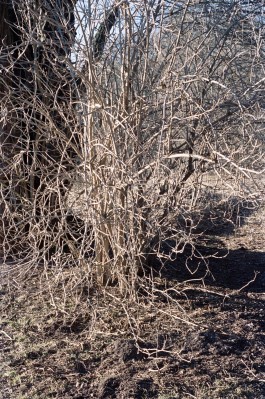
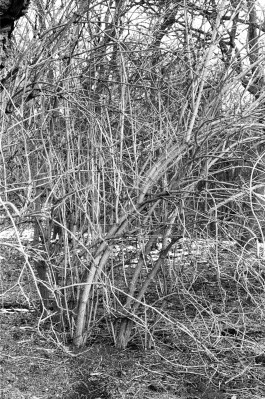
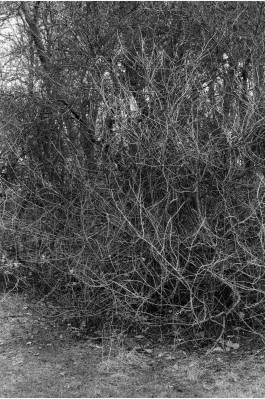
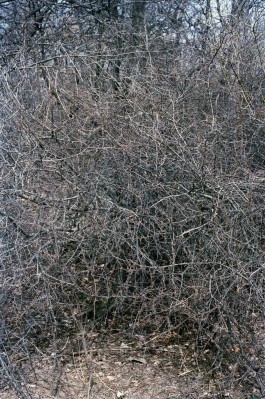
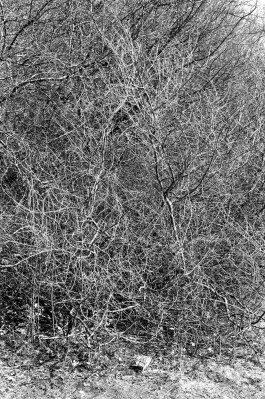
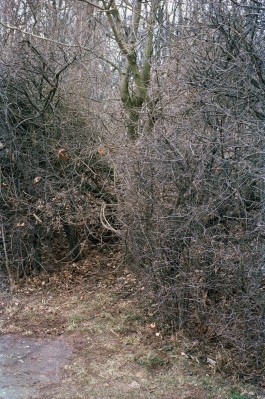
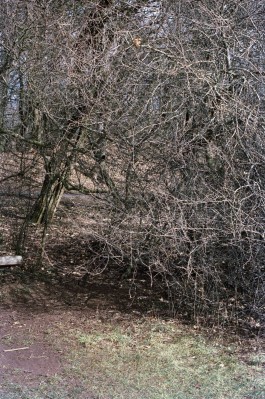
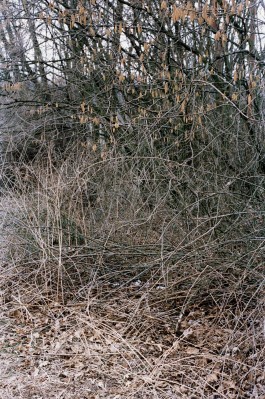
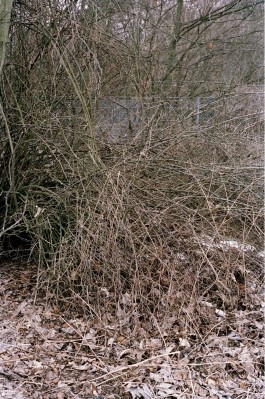
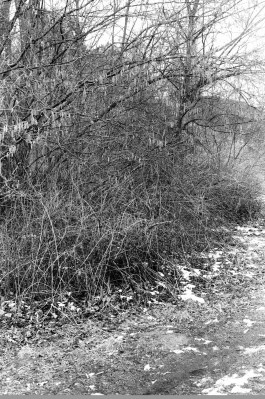
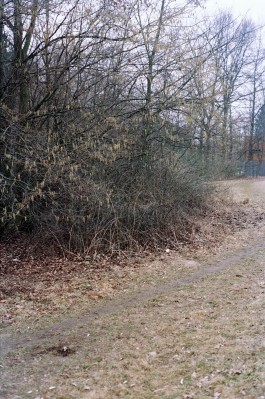
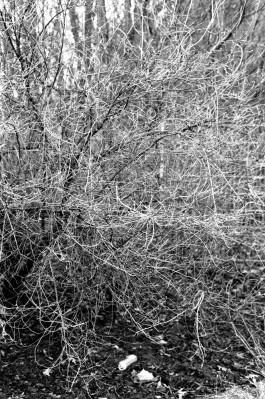
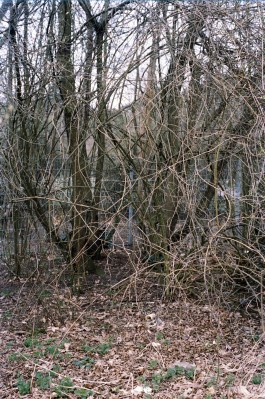
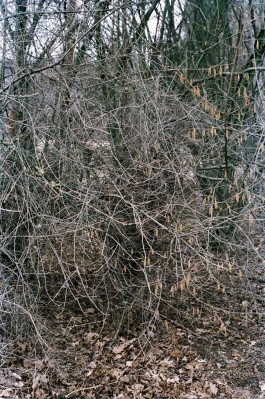
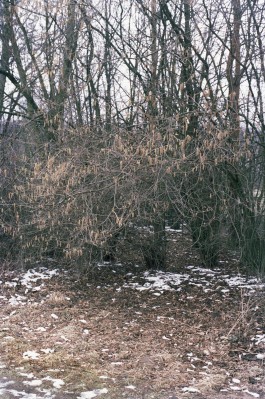
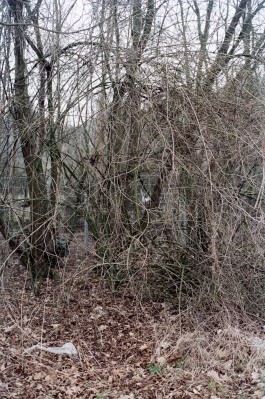
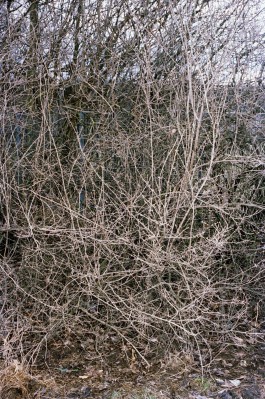
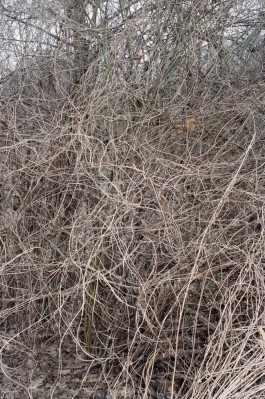
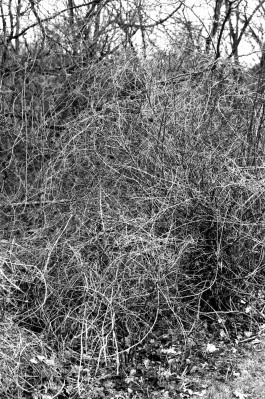
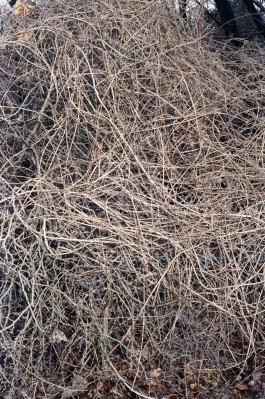
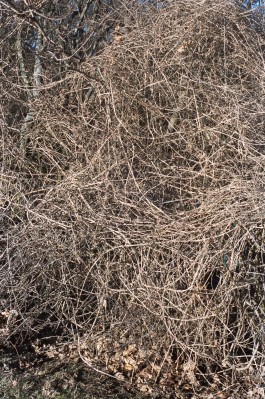
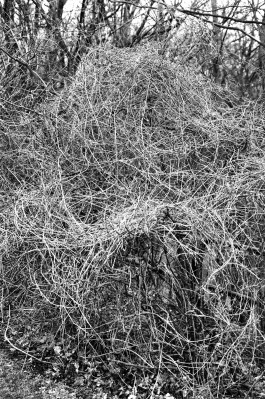
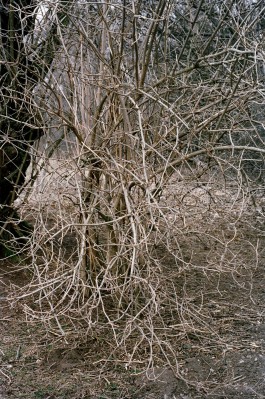
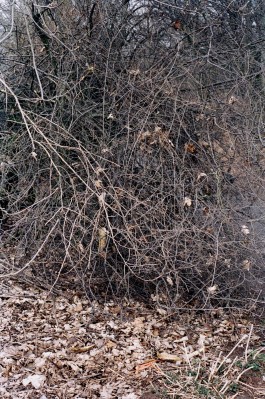
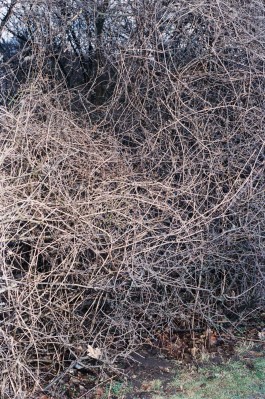
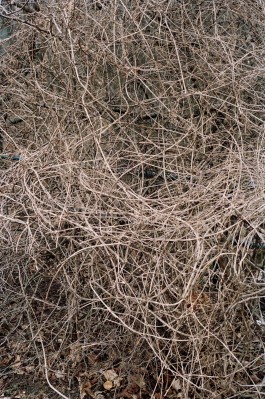
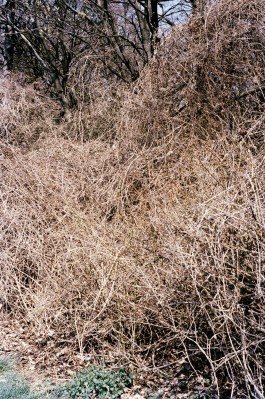
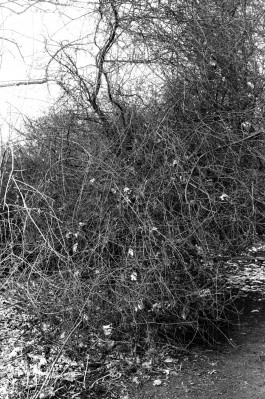
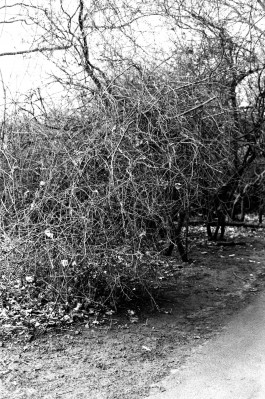
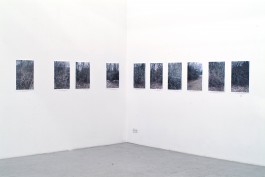
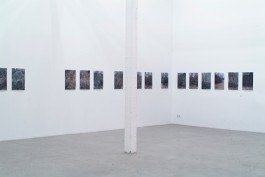
Nonstop
60 photographs, 20 × 30 cm, wall-installation. 2 photographs, 70 × 140 cm, b/w, digital print. 36 photographs, 18,5 × 26,5 cm, book, 2013, text
Diese Arbeit ist während eines Arbeitsaufenthaltes in Paris entstanden. Zu sehen sind Fotografien ideologisch geprägter Architektur aus den Sechziger- und Siebzigerjahren wie u.a. die Kommunistische Parteizentrale, sowie aktuelle, renommierte Wohnbauten und Baustellen international bekannter Architekten. Durch die nahtlose Aneinanderreihung der Bilder in der Hängung entsteht ein fließender Übergang zwischen den teilweise stark verfallenen Bauten der Siebzigerjahre, den ständigen Umbausituationen in Paris und den materialisierten Visionen der aktuellen, städtebaulichen Neuerungen und Architektur.
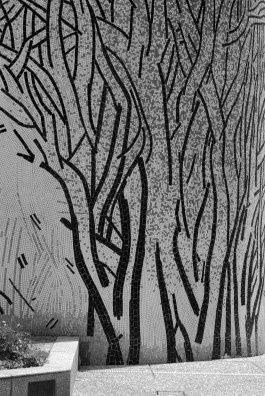
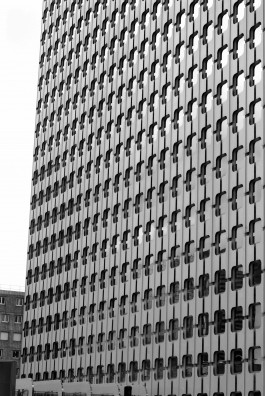
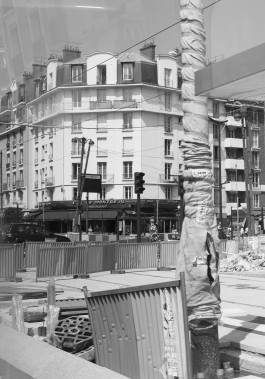
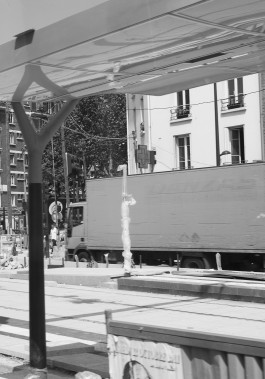
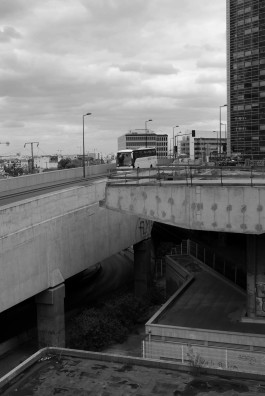
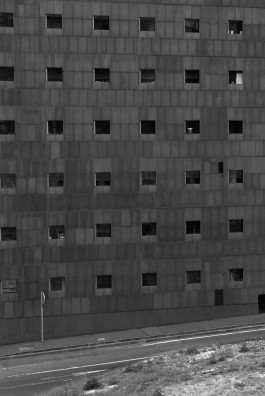
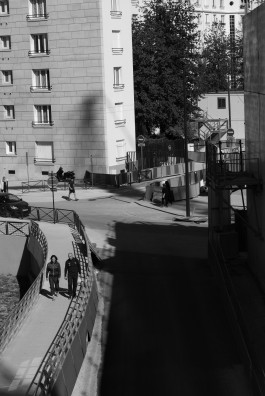



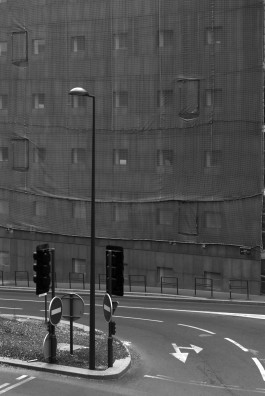
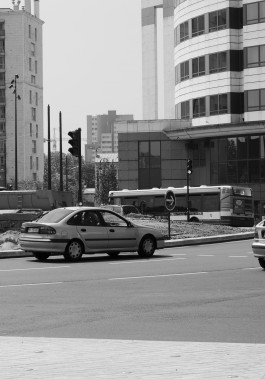
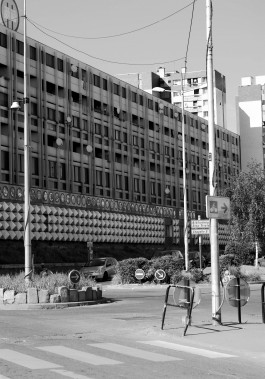
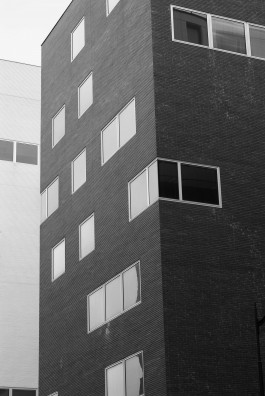
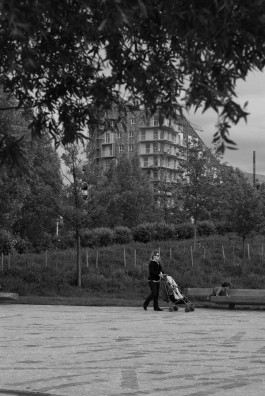
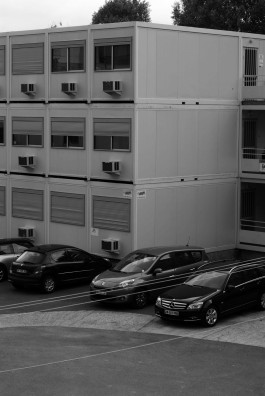
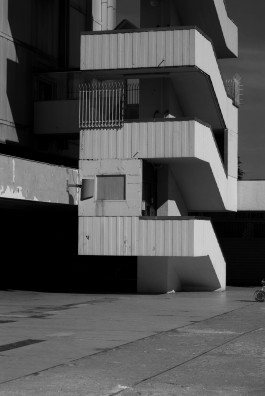
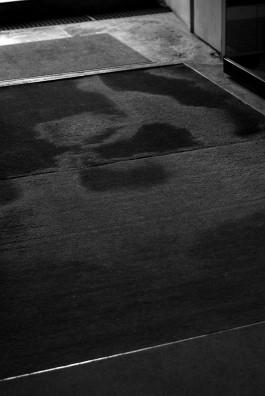
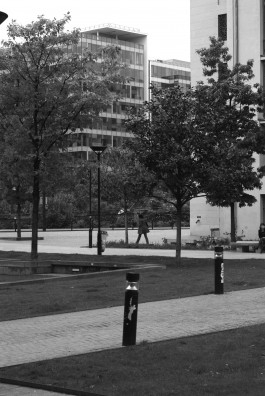
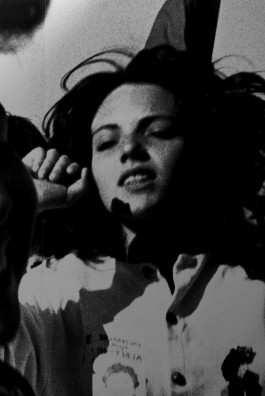
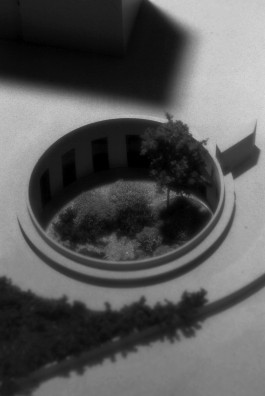
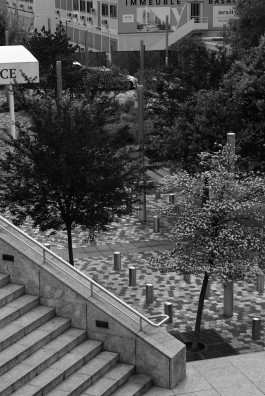
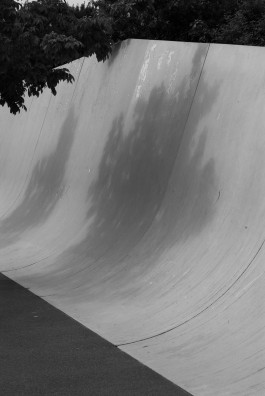
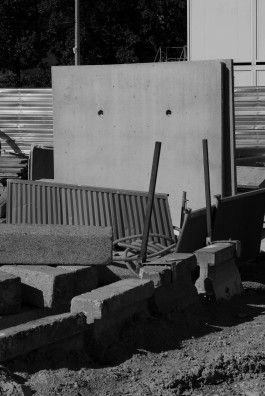
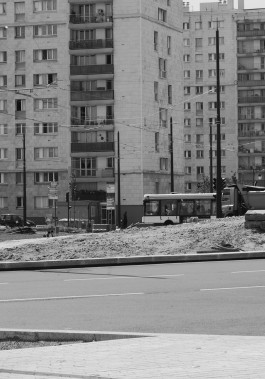
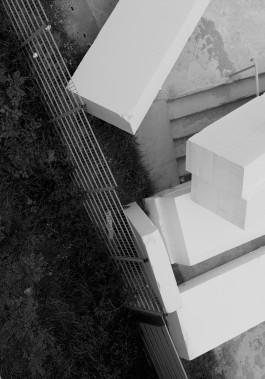
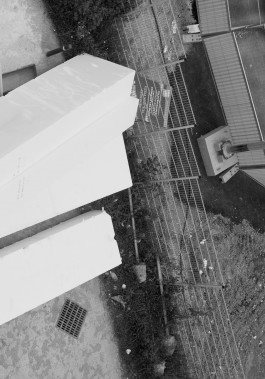
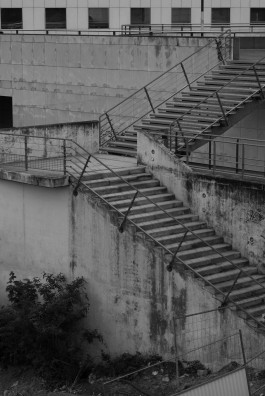
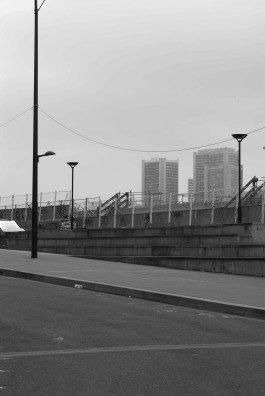
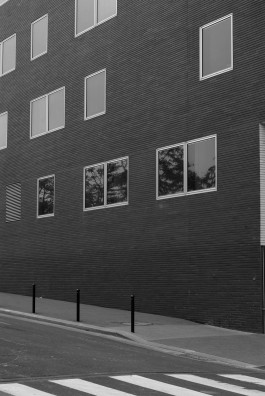
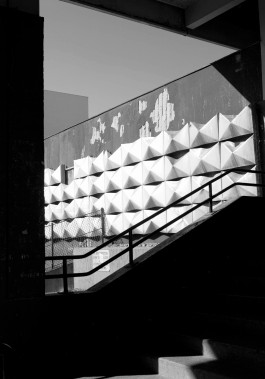
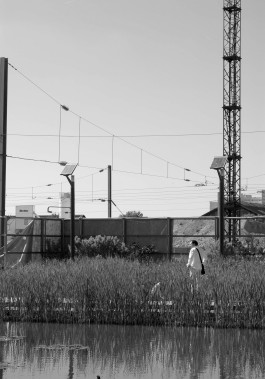
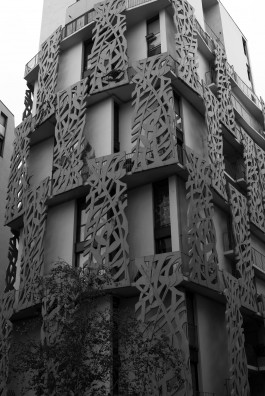
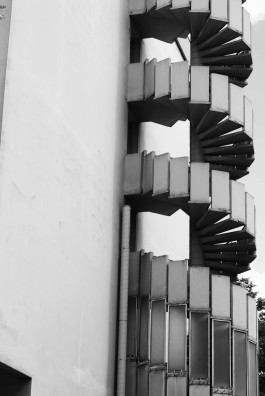
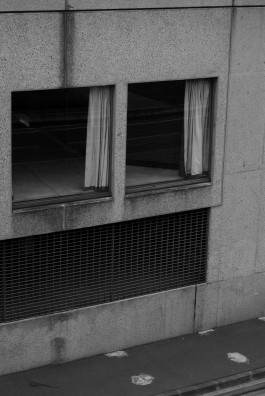
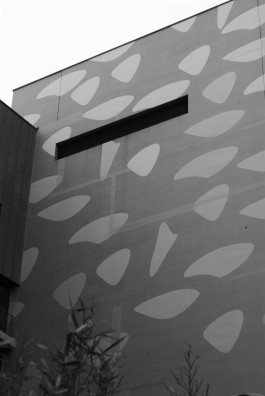
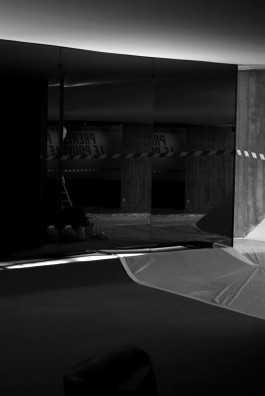
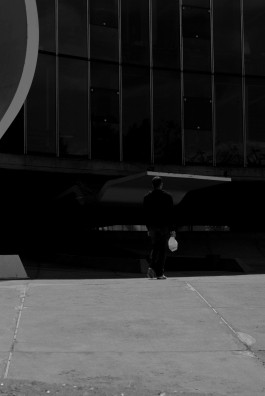
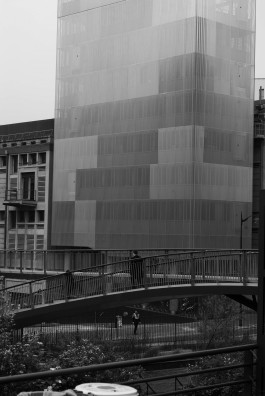
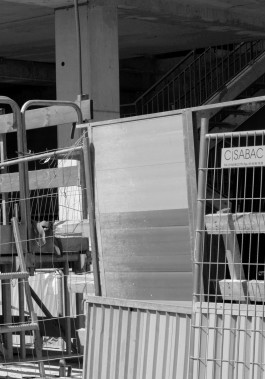
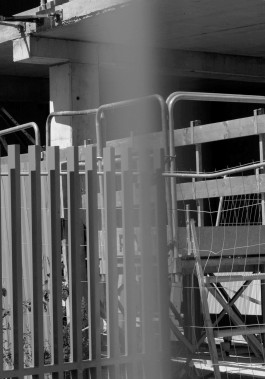
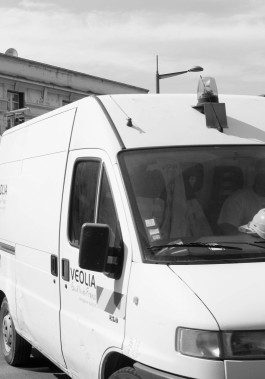
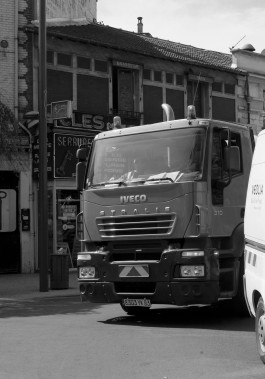
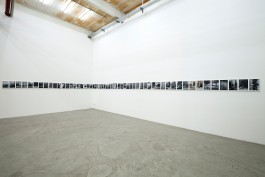
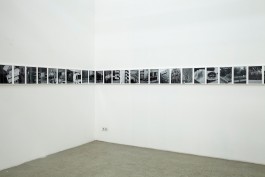
Abstracts
Slideshow of 32 photographs, 3 fine art inkjet-prints, 119 × 84 cm, 5 + 1 ap, 36 fine art inkjet-prints, 60 × 42 cm, 5 + 1 ap, 2011, text
Caroline Hakes new work inspects the public living space of large West German cities. Tall façades consisting of planes and grids, corner solutions, stairs, altered space out of cement, puddles on sealed land emerged from the point of view of someone taking a stroll. The visible decay of this architecture is combined with knowledge of the ideals and innovations of the 1960s and 1970s to become demurely charming.
Over time and with a changing urban context, architecture reveals a new dimension, makes a statement about itself – what it once wanted to be and what it actually represents, how it behaves with respect to its own history and to the respective world of today, whether its concept is in a position to align itself with courses of time.
Abstracts is an alternative plan to nostalgia, a scrutinizing look at the endurance of in part utopian ideologies of living, at what remains of the substance of a barely palpable epoch. An examination of objects that have been reoriented in terms of urban planning with respect to their validity after forty years, an inquiry into their claim to help shape social life and a dehierarchized organization of space. What were taken were photographs from the perspective of an urban reality that has long since caught up with these buildings and forced them to the edge of perception.
Caroline Hakes abstracting approach – choice of structures, details, chromacities, and their visual compositionallows the structures to be perceived as aesthetic objects and at the same time demonstrates their decline as backdrops and traces of contemporary social reality. The two-dimensional detail creates added distance: as a photographic meta-perspective, it is less the case that Abstracts captures a moment in time and more that a space of time is stretched between the 1960s and 1970s and the works creation in 2010. Priority is given to the relativity of the modernist claim of this architecture and thus its close relationship with time-bound ideology, dogma, and aesthetics. By means of reducing it to the level of the image, for the viewer, architecture becomes a materially static yet at the same time flexible symbol in terms of its meaning: the gap between claim and reality only becomes visible in retrospect.
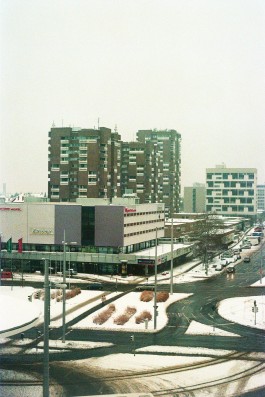
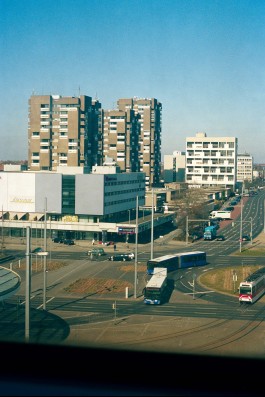
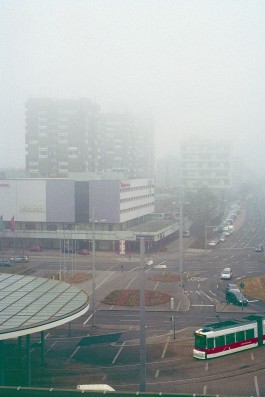
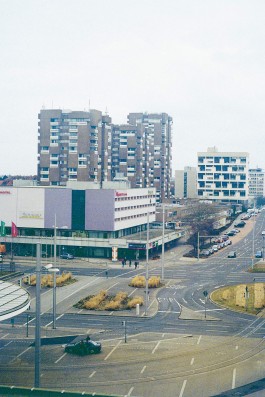
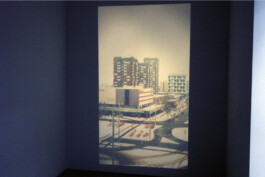
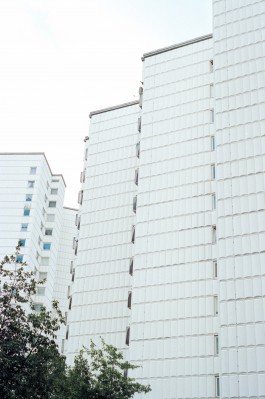
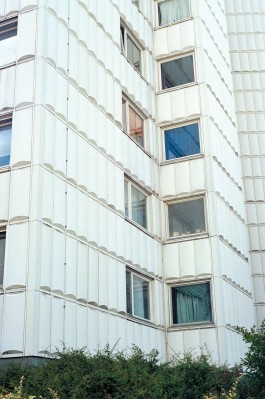
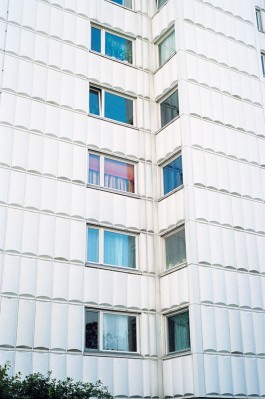
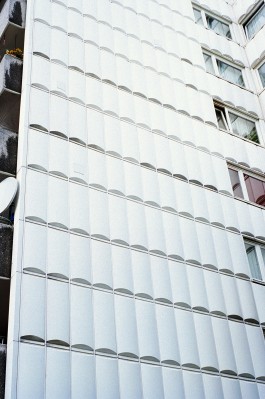
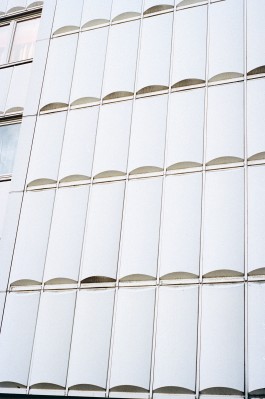
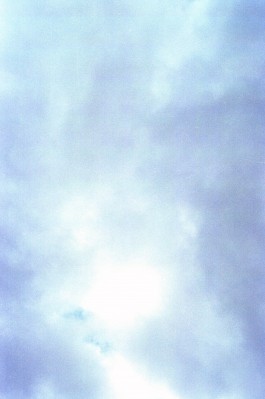
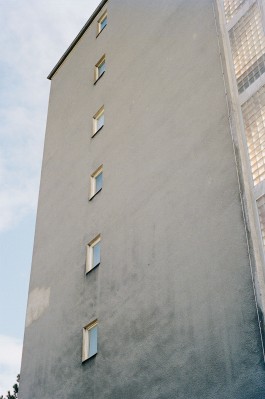
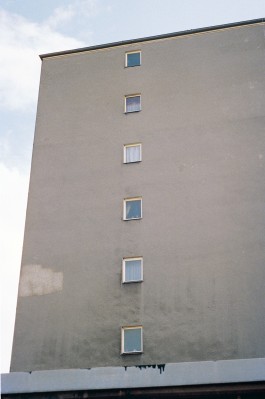
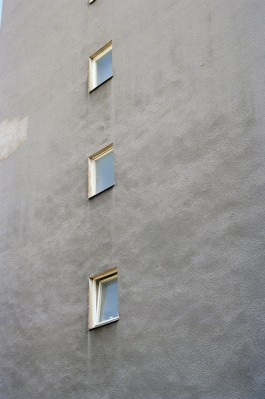
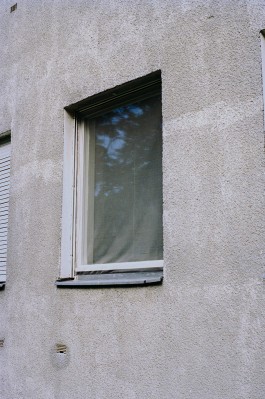
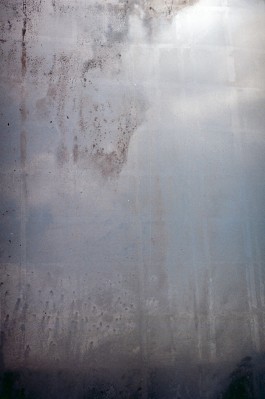
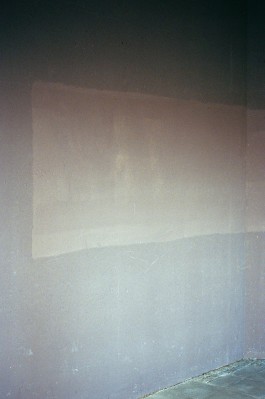
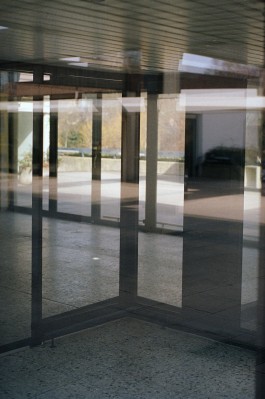
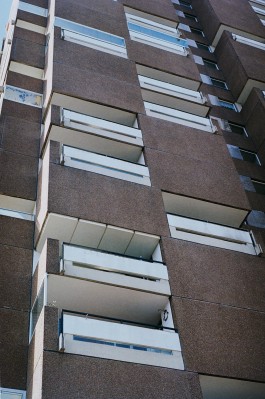
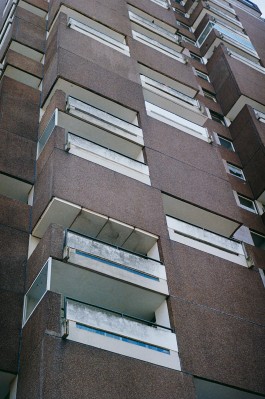
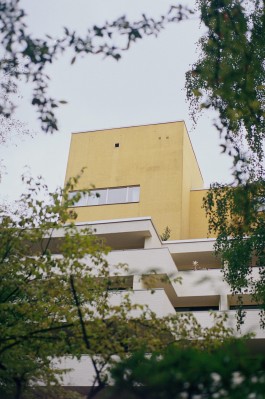
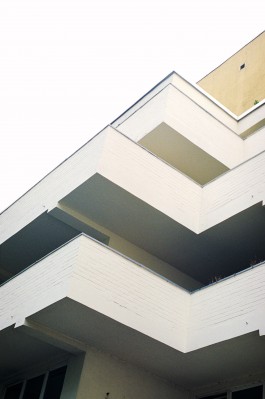
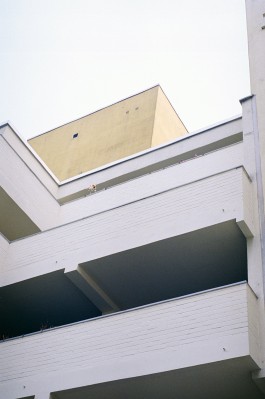
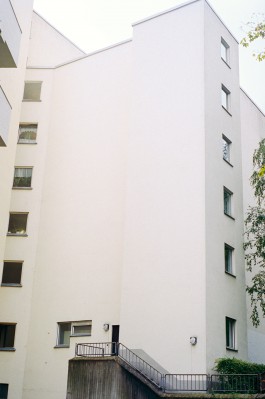
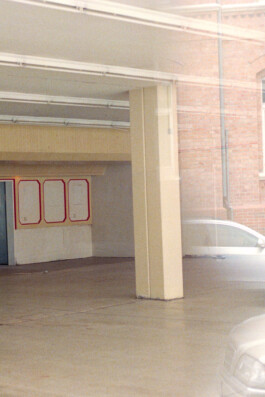
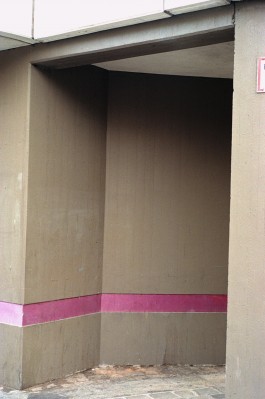
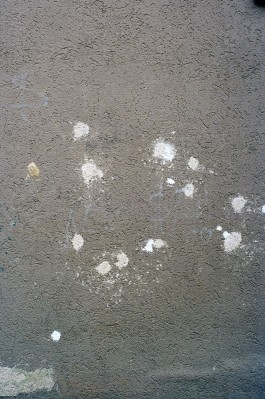
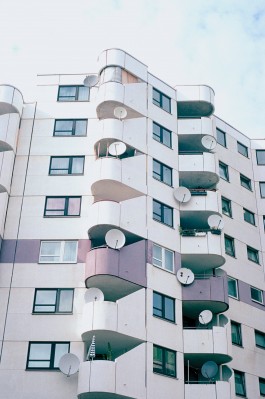
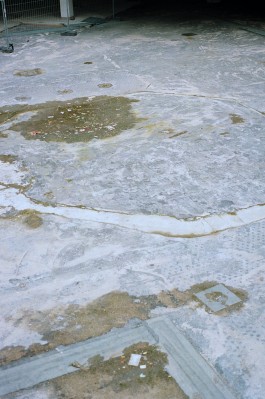
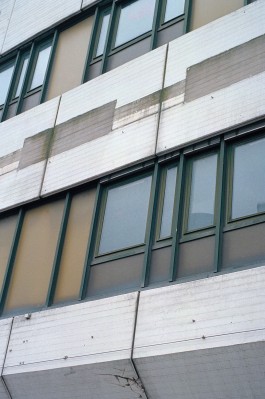
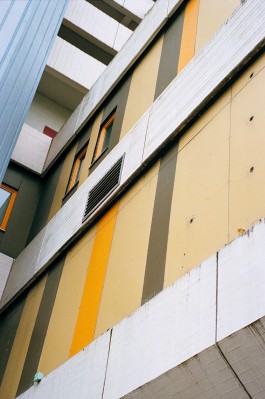
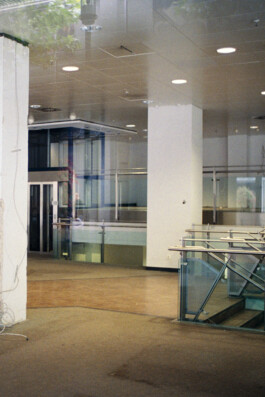
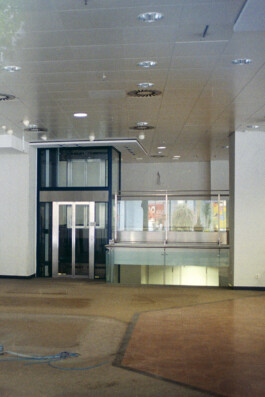
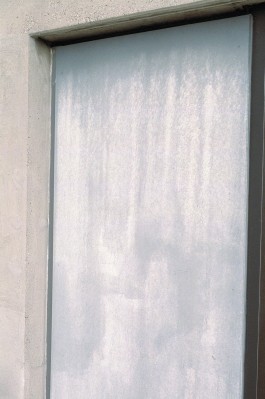
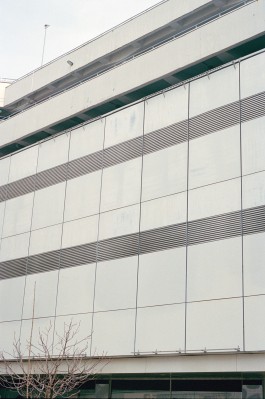
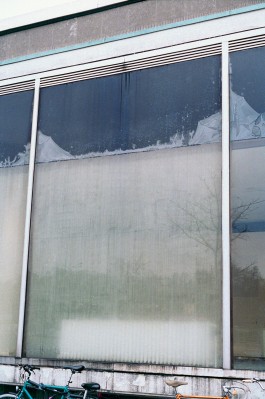
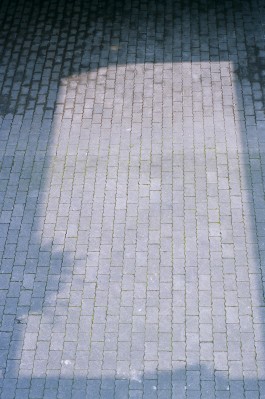
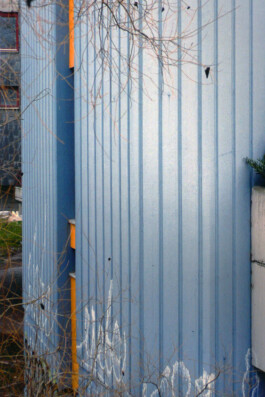
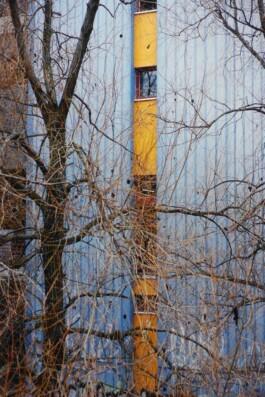
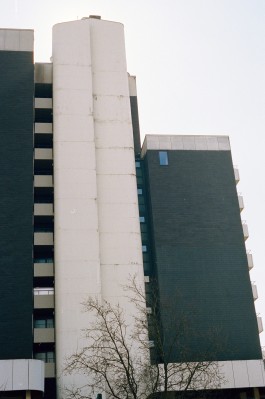
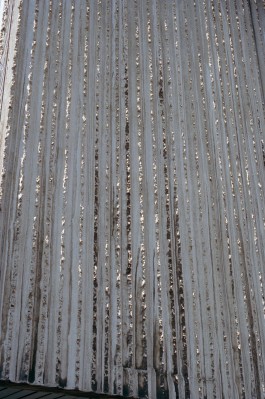
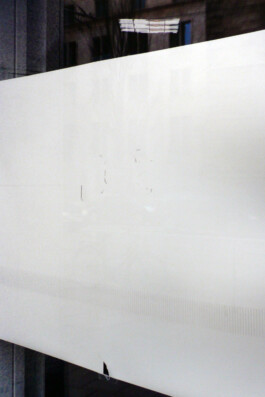
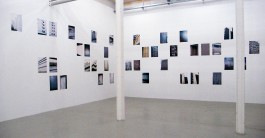
Delight
20 photographs, 26,5 × 40 cm, c-prints, 2009, text
Für meine Arbeit Delight habe ich verschiedene Fachmessen in Deutschland besucht. Auf diesen Internationalen Fachmessen werden die Produkte und ihre neuesten Entwicklungen als Innovationen beworben. Die Notwendigkeit Aufmerksamkeit zu erlangen ist aufgrund der großen Konkurrenz existenziell und sehr deutlich spürbar, was teilweise zu grotesken Inszenierungen führt. Für die Delight-Serie habe ich mich auf Gegenstände des Alltags konzentriert und so unterschiedliche Objekte wie USB-Kabel, Mobiletelefone, Rohre oder Reinigungsgeräte fotografiert.
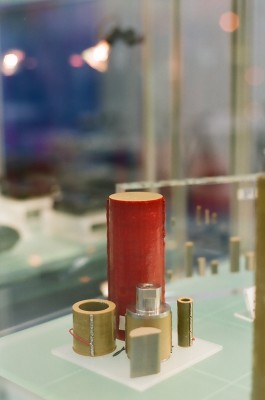
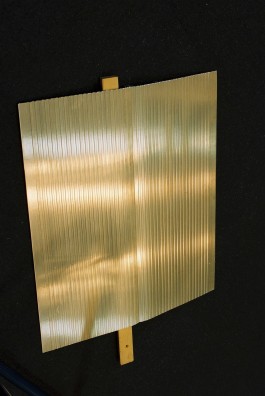
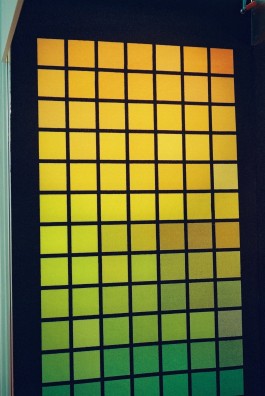

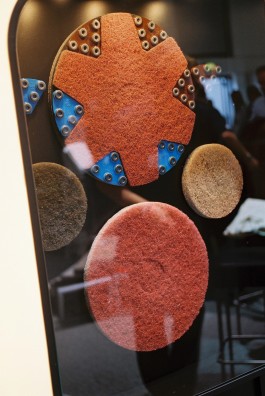
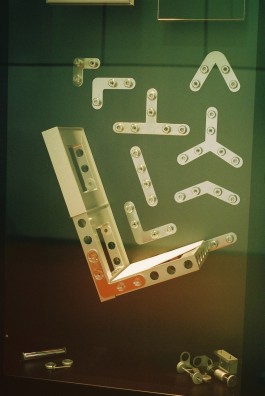

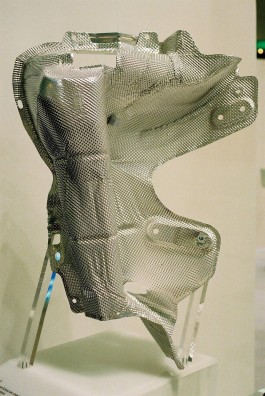

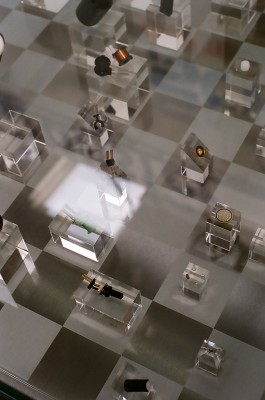

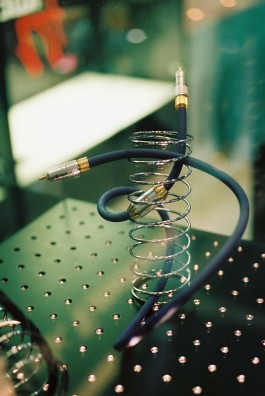


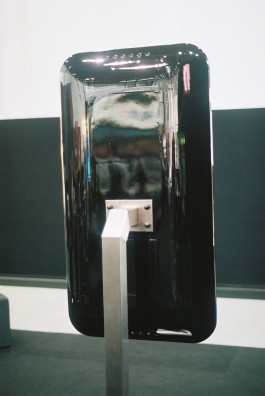
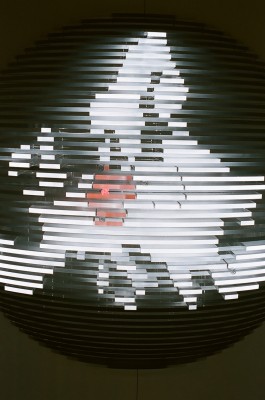

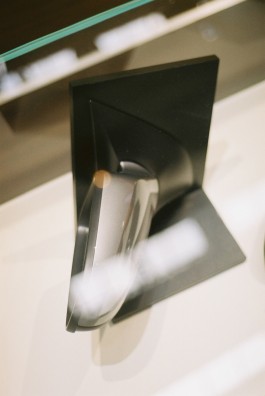
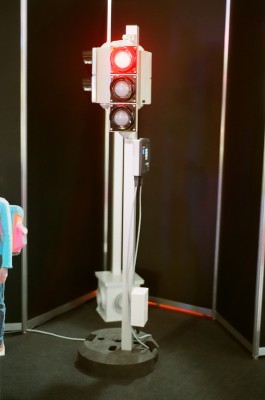
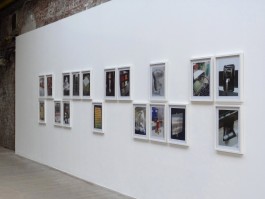
Candy
21 photographs, 70 × 100 cm, c-prints, 2008, text
Die Installation Candy zeigt Detailansichten der neuesten Automodelle und deren Farbdesign, die 2008 auf der Internationalen Automobilmesse in Frankfurt präsentiert wurden. Die Abstraktion war hier für mich das adäquate Vorgehen, um die Dimension und Ausprägungen dieser kommerziellen Totalinszenierung einer der größten Automobilmessen der Welt zum Ausdruck zu bringen.
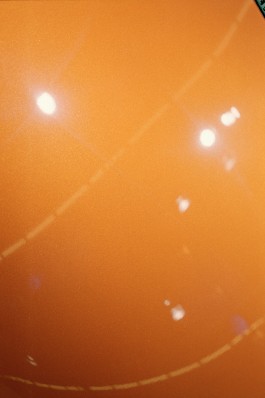
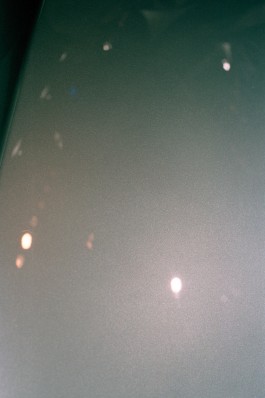
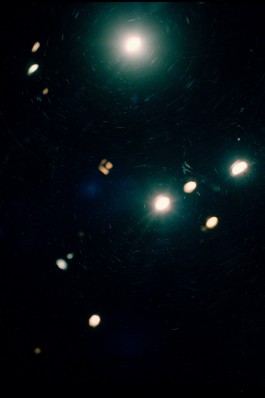
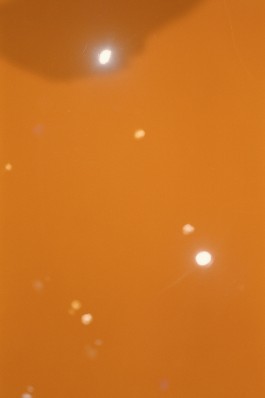

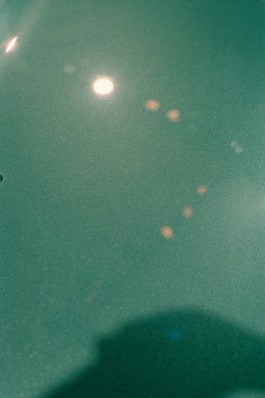
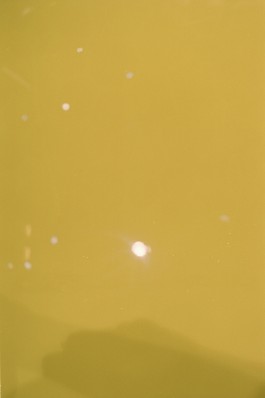
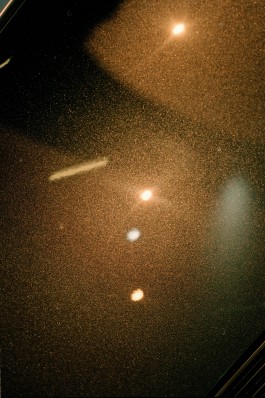
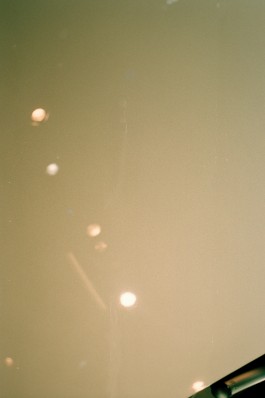
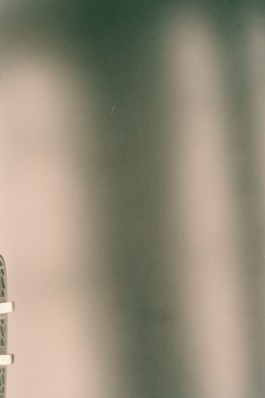
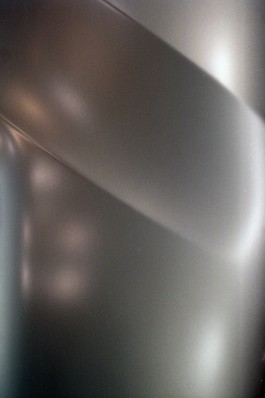
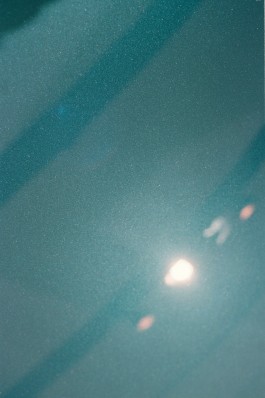
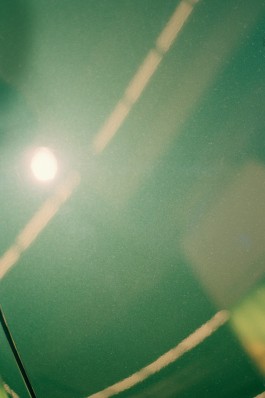
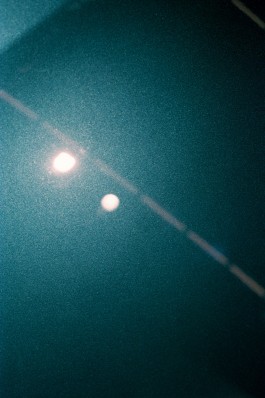
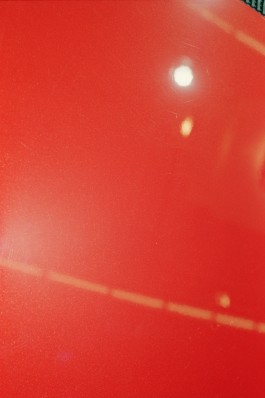
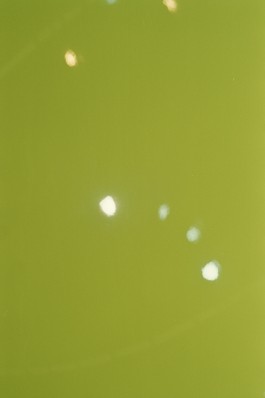


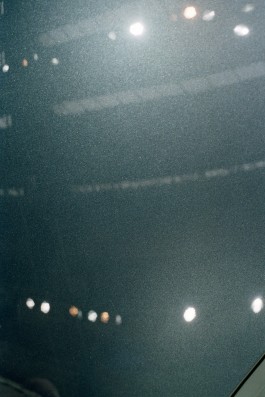


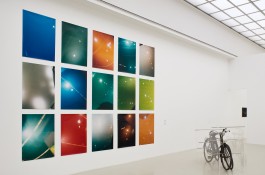
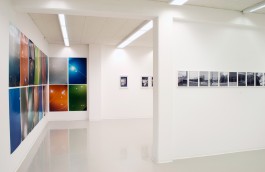
Neuroplan
8 photographs, 80 × 100 cm. 1 photograph, 45 × 56 cm, c-prints.
1 lightbox, 126 × 160 cm. booklet, 2006, text
Subject matter of Caroline Hake´s works is contrasting reality in media and staging of reality in other spheres with real conditions of everyday life. She concentrates on social and instrumentalized contradictions of desire and reality.
These contradictions are the basic idea of her new work Neuroplan. It seems to the photographer that the forms of architecture, design, media staging or the organization of recreational facilities symbolize empty promises and the unrealizable desire for a perfect present. She presents a heterogeneous spectrum of possible places and stages. She does not follow a serial logic in the picture sequence, but she condenses her statements on an associative level. Hake presents subjects, which can not be named/defined at first sight. Strange test arrangements, which are only derivable from the title: Soundproof Room, Magic/Flying Carpet, Warm Front. But at the photos the phenomena does not become obvious, rather the awkward and dull character of the experiments and arrangements. At the same time the pictures demonstrate, how a substitute for real life can be created by suppression and projection to avoid meeting the pressing demands of reality. The calculated simulation of existential needs and the illusion of overall view, understanding and perfection find their resonance in the complete work of Neuroplan.
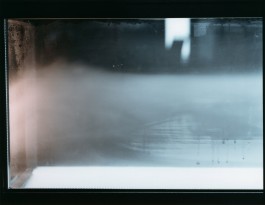
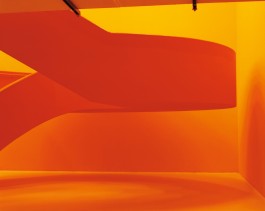
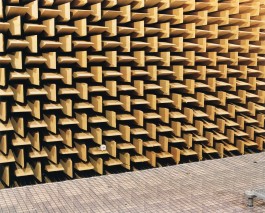
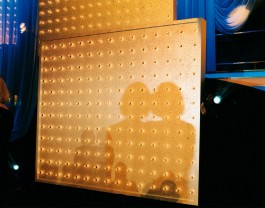
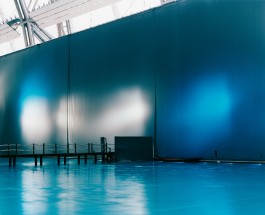
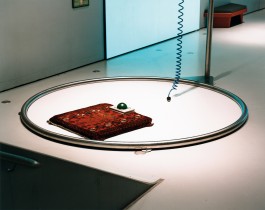
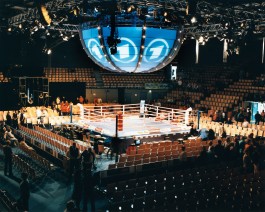
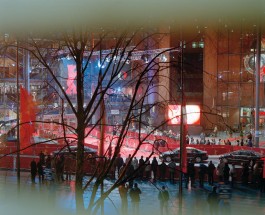
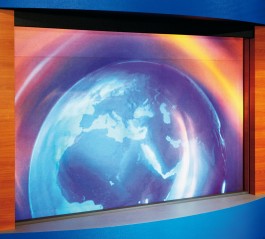
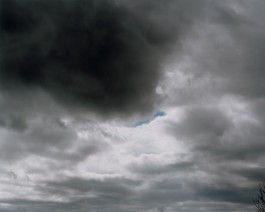
Uniglory
10 photographs, 70 × 90 cm, 70 × 110 cm, c-prints, diasec, 2001–2002
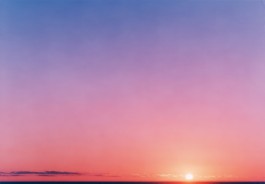
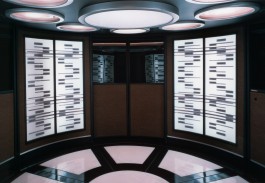
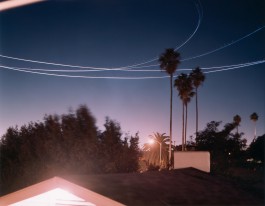
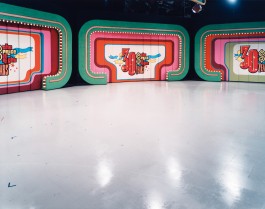
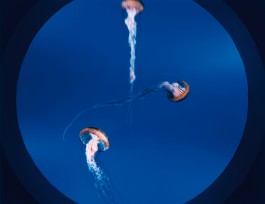

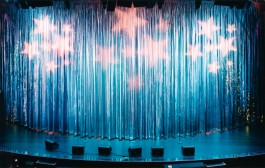
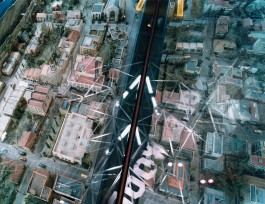
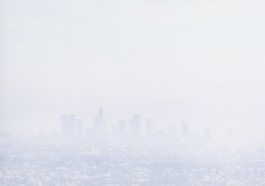
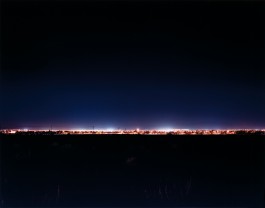
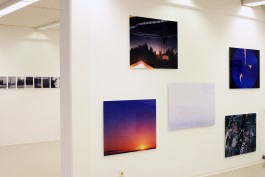
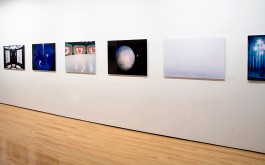
Monitor
12 photographs, 120 × 160 cm, c-prints, 1998–2003, text
The Monitor series presents TV sets of popular German shows which I photographed in the studios under the original lighting conditions from the location of a TV camera during a break.
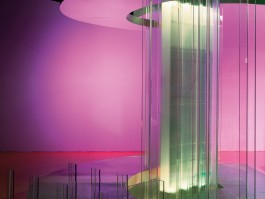
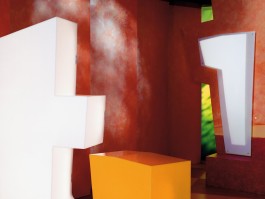
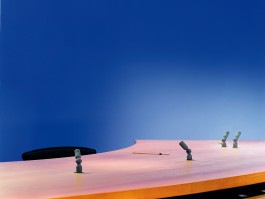
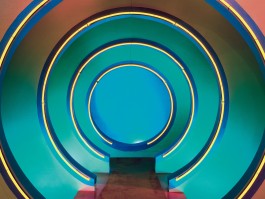
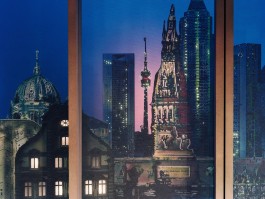
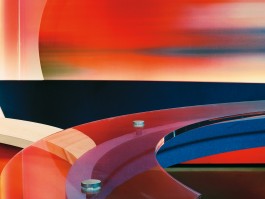
Decollage
10 photo-montages, 220 × 360 cm, posters in public space, Berlin-Mitte, 1997
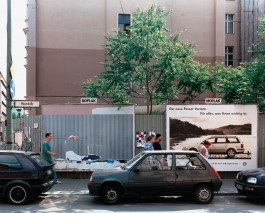
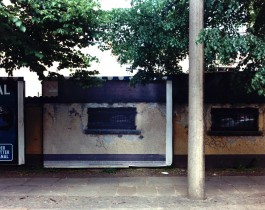
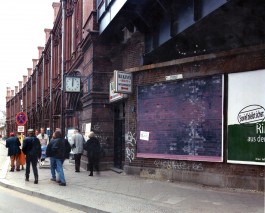
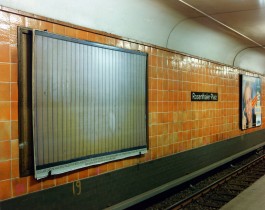
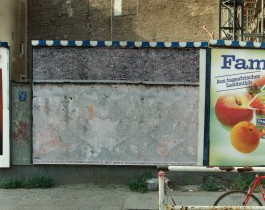
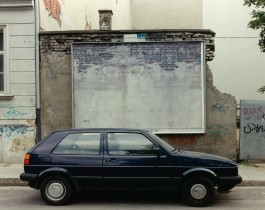
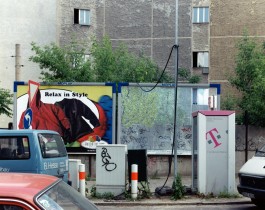
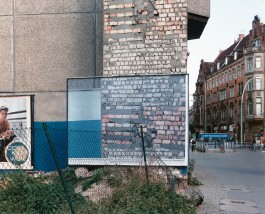
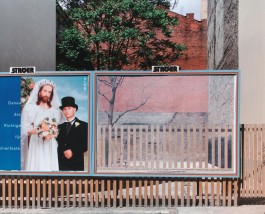
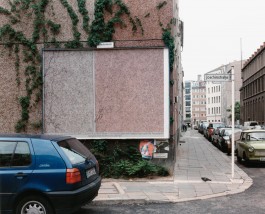
Fenster
12 photographs, 13 × 19 cm, c-prints, 2019













Upside Down
12 photographs, 6 × 83 × 58 cm, 3 × 98 × 68,5 cm, 3 × 138,5 × 97 cm, laser foil prints on glass, 2017, text
In previous exhibitions, Caroline Hake dealt with utopian ideologies of living. Considering how this extends to her current work, Hake references a series of fifteen photographs titled “Upside Down” taken during the cleanup and disposal of an old school complex. “I photographed in a comprehensive school in Braunschweig, which shows the upheaval situation of an Integrated Comprehensive School. The photographed school complex dates from 1972 and was one of the first buildings of this new type and concept. Room and color design, classrooms, corridors and guidance systems, auditorium and schoolyard should become the bearers of a democratic idea of school. Equal opportunities and positive synergies should be made possible by bringing together primary, secondary and high school students into one class. This ICS was the first in Lower Saxony and was demolished in 2016. The school then received a new modern, smaller building. I photographed in the old building and during the demolition work, the move out of the old building and move into the new building.” “However, I am not concerned with an architectural review, but rather with the example of this radical change, I would like to emphasize the change in architectural and social ideologies.” “In an entirely existential sense, school and education are representative of the endeavor to establish an ideal form of imprinting, optimal education and discipline, equal opportunity and the status of knowledge. These ideals reach their limits in reality. Daily testing shows that people follow very individual impulses, that other social groups represent different ideas and concepts, and that theories often can not be put into practice.” Text: Elizabeth Gerdeman



















Planen
13 photographs, 60 × 90 cm, 3 × 105 × 150 cm, fine art inkjet-prints, 2014, text
In meiner Ausstellung Work and Progress habe ich Arbeiten zusammengeführt, die sich mit Phasen des Umbruchs und den immer wiederkehrenden Bemühungen des vermeintlich Neuen beschäftigen. Die Arbeit Planen habe ich während der Umbauarbeiten in einem Museum fotografiert. Der Blick richtet sich auf die Zeit zwischen zwei Ausstellungen. Aufbau und Abbau sind Teil desselben Vorgangs von Konzeption, Eröffnung, Präsentation und Beendigung einer Schau. Die Folien decken abstrakte Werke und Kisten als Sicht- und Staubschutz ab. Diese bleiben unter den Planen verborgen und die Fotografien machen nichts als das Licht, die Spiegelungen und Faltungen sichtbar.


















No Work
36 photographs, 36 × 58 cm. 2 photographs, 117 × 179 cm, fine-art-inkjet prints, 2013, text
Während meines Arbeitsaufenthaltes in Paris machte ich oftmals Pause in den überfüllten städtischen Parkanlagen. Die urbane Verdichtung der französischen Metropole führt zu einem Mangel an Orten, die jenseits der allgemeinen Hektik und Funktionalität, ein Moment der Ruhe, der Erholung oder des Stillstands ermöglichen. Die Parks glichen überfüllten Stadien, in denen der Wunsch nach Intimität und Ruhe inmitten einer großen Masse fast paradox anmutete.
Meinen bildnerischen Fokus legte ich aber auf Nischen und Ränder der Parklandschaft und auf Gebüschformationen, die jenseits des romantischen Bildes eine gewisse Ödnis und Unübersichtlichkeit boten und damit deutlich der innerstädtischen Struktur und dem Ideal einer gestalteten Parkanlage entgegenstanden. Die Gebüsche strahlen Einsamkeit und Melancholie aus und konterkarieren durch die Verwendung verschiedener Filmmaterialien und Kameratechniken ein Spektrum an Fluchtmöglichkeiten und romantischen Projektionen. Die Auswahl von 34 Fotografien innerhalb der Ausstellung No Work betonte in der Hängung die Redundanz der sechs ausgewählten Gebüschformationen. Im Künstlerbuch habe ich diese verschiedenen Gruppierungen teilweise als Leporello präsentiert.































Nonstop
60 photographs, 20 × 30 cm, wall-installation. 2 photographs, 70 × 140 cm, b/w, digital print. 36 photographs, 18,5 × 26,5 cm, book, 2013, text
Diese Arbeit ist während eines Arbeitsaufenthaltes in Paris entstanden. Zu sehen sind Fotografien ideologisch geprägter Architektur aus den Sechziger- und Siebzigerjahren wie u.a. die Kommunistische Parteizentrale, sowie aktuelle, renommierte Wohnbauten und Baustellen international bekannter Architekten. Durch die nahtlose Aneinanderreihung der Bilder in der Hängung entsteht ein fließender Übergang zwischen den teilweise stark verfallenen Bauten der Siebzigerjahre, den ständigen Umbausituationen in Paris und den materialisierten Visionen der aktuellen, städtebaulichen Neuerungen und Architektur.













































Abstracts
Slideshow of 32 photographs, 3 fine art inkjet-prints, 119 × 84 cm, 5 + 1 ap, 36 fine art inkjet-prints, 60 × 42 cm, 5 + 1 ap, 2011, text
Caroline Hakes new work inspects the public living space of large West German cities. Tall façades consisting of planes and grids, corner solutions, stairs, altered space out of cement, puddles on sealed land emerged from the point of view of someone taking a stroll. The visible decay of this architecture is combined with knowledge of the ideals and innovations of the 1960s and 1970s to become demurely charming.
Over time and with a changing urban context, architecture reveals a new dimension, makes a statement about itself – what it once wanted to be and what it actually represents, how it behaves with respect to its own history and to the respective world of today, whether its concept is in a position to align itself with courses of time.
Abstracts is an alternative plan to nostalgia, a scrutinizing look at the endurance of in part utopian ideologies of living, at what remains of the substance of a barely palpable epoch. An examination of objects that have been reoriented in terms of urban planning with respect to their validity after forty years, an inquiry into their claim to help shape social life and a dehierarchized organization of space. What were taken were photographs from the perspective of an urban reality that has long since caught up with these buildings and forced them to the edge of perception.
Caroline Hakes abstracting approach – choice of structures, details, chromacities, and their visual compositionallows the structures to be perceived as aesthetic objects and at the same time demonstrates their decline as backdrops and traces of contemporary social reality. The two-dimensional detail creates added distance: as a photographic meta-perspective, it is less the case that Abstracts captures a moment in time and more that a space of time is stretched between the 1960s and 1970s and the works creation in 2010. Priority is given to the relativity of the modernist claim of this architecture and thus its close relationship with time-bound ideology, dogma, and aesthetics. By means of reducing it to the level of the image, for the viewer, architecture becomes a materially static yet at the same time flexible symbol in terms of its meaning: the gap between claim and reality only becomes visible in retrospect.











































Delight
20 photographs, 26,5 × 40 cm, c-prints, 2009, text
Für meine Arbeit Delight habe ich verschiedene Fachmessen in Deutschland besucht. Auf diesen Internationalen Fachmessen werden die Produkte und ihre neuesten Entwicklungen als Innovationen beworben. Die Notwendigkeit Aufmerksamkeit zu erlangen ist aufgrund der großen Konkurrenz existenziell und sehr deutlich spürbar, was teilweise zu grotesken Inszenierungen führt. Für die Delight-Serie habe ich mich auf Gegenstände des Alltags konzentriert und so unterschiedliche Objekte wie USB-Kabel, Mobiletelefone, Rohre oder Reinigungsgeräte fotografiert.




















Candy
21 photographs, 70 × 100 cm, c-prints, 2008, text
Die Installation Candy zeigt Detailansichten der neuesten Automodelle und deren Farbdesign, die 2008 auf der Internationalen Automobilmesse in Frankfurt präsentiert wurden. Die Abstraktion war hier für mich das adäquate Vorgehen, um die Dimension und Ausprägungen dieser kommerziellen Totalinszenierung einer der größten Automobilmessen der Welt zum Ausdruck zu bringen.























Neuroplan
8 photographs, 80 × 100 cm. 1 photograph, 45 × 56 cm, c-prints. 1 lightbox, 126 × 160 cm. booklet, 2006, text
Subject matter of Caroline Hake´s works is contrasting reality in media and staging of reality in other spheres with real conditions of everyday life. She concentrates on social and instrumentalized contradictions of desire and reality.
These contradictions are the basic idea of her new work Neuroplan. It seems to the photographer that the forms of architecture, design, media staging or the organization of recreational facilities symbolize empty promises and the unrealizable desire for a perfect present. She presents a heterogeneous spectrum of possible places and stages. She does not follow a serial logic in the picture sequence, but she condenses her statements on an associative level. Hake presents subjects, which can not be named/defined at first sight. Strange test arrangements, which are only derivable from the title: Soundproof Room, Magic/Flying Carpet, Warm Front. But at the photos the phenomena does not become obvious, rather the awkward and dull character of the experiments and arrangements. At the same time the pictures demonstrate, how a substitute for real life can be created by suppression and projection to avoid meeting the pressing demands of reality. The calculated simulation of existential needs and the illusion of overall view, understanding and perfection find their resonance in the complete work of Neuroplan.










Uniglory
10 photographs, 70 × 90 cm, 70 × 110 cm, c-prints, diasec, 2001–2002












Monitor
12 photographs, 120 × 160 cm, c-prints, 1998–2003, text
The Monitor series presents TV sets of popular German shows which I photographed in the studios under the original lighting conditions from the location of a TV camera during a break.






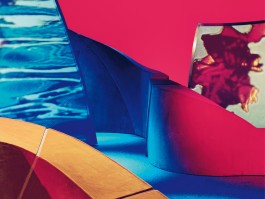
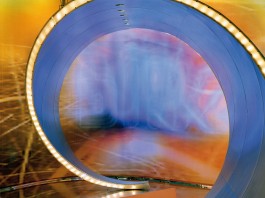
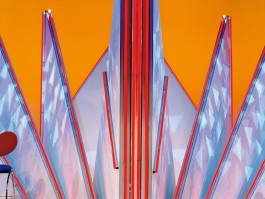
Decollage
10 photo-montages, 220 × 360 cm, posters in public space, Berlin-Mitte, 1997










